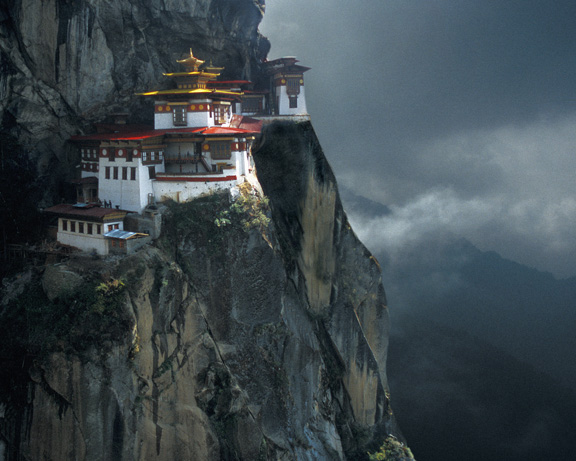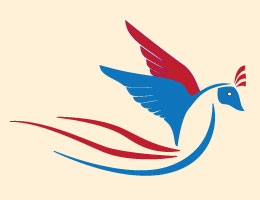Tibetan Buddhism
Andreas Walsh

 Padmasambhava
Padmasambhava
Buddhism's Beginnings
in Tibet are shadowy, but due to its geographical and cultural proximity to the birthplace of Buddhism - the Himalayan lands in the north of India - it was already well established by the middle of the first millenium.In the reign of king Songtsan Gampo (618-649), the establishment of Buddhism accelerated due to the influence of his two wives - one from Nepal and one from China - both fervent Buddhists. In the 8th century, King Trisong Detsen (755-797) established Buddhism as the official religion of the state. He invited Indian Buddhist scholars to his court, especially the famous esoteric master Padmasambhava who is regarded in Tibet as the second Buddha. In addition to writing a number of important scriptures, some of which he hid for future generations, Padmasambhava, along with his Tibetan consort Yeshe Tsogyal, the Princess of Kharchen, established the Nyingma ("old") School.
But the chronicles tell that the aristocracy of Tibet was fiercely hostile to the establishment of Buddhism, and under pressure and persecution Buddhism fell into a time of decline that lasted until 971, when king Yeshe O sent 21 young monks to India to bring back teachings and translate them. These translations and all which followed came to be called Sarma ("new ones"), while any translations before his time were called Nyingma ("old"). In this way the second spread of Buddhism in Tibet began.
Contents
 Tiger's Nest Monastery, Bhutan
Tiger's Nest Monastery, Bhutan
The Tibetan Treasure Tradition
The emergence of the Treasures coincided with the second spread of Buddhism in Tibet. While there was a movement to re-establish contact with India and bring back and study Indian Buddhist texts, there was also a simultaneous movement to return to the original Tibetan Buddhist traditions from before the persecution, which had never completely disappeared or lost their core of hidden followers or their power for transformation. Ever since that time, the aspiration to preserve the spiritual heart of the age of Padmasambhava has always been nourished by the discovery of his treasures.
The Terma (Tibetan for "treasures") is a tradition of constant self-renewal, where teachings and religious objects are continuously found which are said to have been concealed by Padmasambhava and Yeshe Tsogyal for the benefit of future disciples. The followers of the Nyingma School continue to reveal a vast number of Treasure texts to this day. In non-dualist philosophy ultimately all phenomena are Treasures, because the truth is present in everything, but Terma are special teachings that focus the inexhaustible potentiality of the Dharmakaya realm, where a buddha teaches the Treasure-to-be to a devotional retinue united in essence to the Buddha self. From this initial teaching the the Treasure is then gradually transmitted through various lineages of decreasing spritual subtlety until it arrives in the physical world. At this stage the Treasure is presented through the skillful means of awakened teachers like Padmasambhava or one of his disciples, who present the teachings in a way suited for ordinary Buddhist practitioners to absorb the scope and profundity of the original tantra.
Tradition holds that Terma may be a physical object such as a text, statue or ritual implement that is buried in the ground (or earth), hidden in a rock or crystal, secreted in a herb, or a tree, hidden in a lake (or water), or hidden in the sky (space). Though a literal understanding of Terma is "hidden treasure", and sometimes objects are hidden away, the teachings associated with them should be understood as being 'concealed within the mind of the guru', that is, the true place of concealment is in the mindstream.
For a thousand years, revelations of these objects and teachings have provided a way for the Nyingma School to continuously renew its spritual practice. It provides the glue that has held the Nyingma together in shared spirit despite the fact that, unlike the Sarma Schools, they never had a single head, unified organization or enjoyed State sponsership. Terma literature is vast and always increasing, but it's largely focused on those spiritual practices the Nyingmas have always been interested in - Lama, Yidam and Khandro (Guru, Deity and Dakini) - in those forms that were present at the very beginnings of Tibetan Buddhism.

